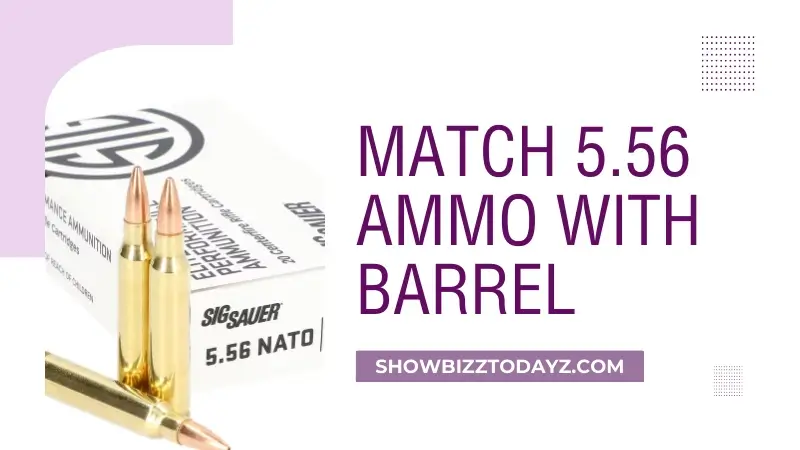How to Match 5.56 Ammo With Barrel Twist for Peak Performance
Barrel twist rate is an important factor in how a bullet behaves after it leaves the barrel. It refers to the distance the bullet must travel in the barrel to make a full rotation. A correct twist rate improves balance in flight and contributes to consistent shooting patterns.

Different bullet weights interact uniquely with various twist rates, affecting overall shooting accuracy. When selecting the right combination, it is important to consider how 5.56 ammo performs with different rifling patterns. Choosing a suitable match improves the bullet’s path and behavior once fired.
Bullet Weight and Its Influence on Twist Rate
Bullet weight is measured in grains and plays a direct role in deciding the required twist rate. Heavier bullets need faster twist rates to stabilize properly, while lighter bullets work better with slower rotations. Selecting the appropriate match improves alignment between the barrel and bullet.
Twist rates like 1:7 or 1:8 suit bullets weighing 62 grains or more. For lighter bullets, around 55 grains, slower twist rates like 1:9 can be considered. Since 5.56 bullets are commonly used across these weight ranges, picking the right match contributes to more reliable use. Read another trending article, Strategies to Improve Caregiver Retention.
Standard Twist Rates and Their Matching Bullets
Some twist rates are more commonly used because they support a wide range of shooting needs. Each type aligns well with a bullet weight and purpose. Choosing the one that fits your needs helps improve performance without requiring extensive modifications.
- 1:7 is used with heavier rounds to maintain stability over distance
- 1:9 suits mid-weight bullets and general-purpose shooting
- 1:12 can work with lighter bullets for short-range targeting
Importance of Avoiding Mismatched Combinations
Pairing the wrong twist rate with a bullet can reduce precision. An incorrect match might not allow the bullet to spin efficiently, which may affect its movement through the air. Stable spinning contributes to a more consistent flight path and better shot grouping.
To avoid issues, it is useful to know the bullet’s weight and match it with the twist rate it responds to. Selecting a balanced combination can improve consistency over time. Planning ahead helps avoid adjustments after each shooting session. Check out our comprehensive article on Why Active Gamers Should Play Fortnite for additional information.
Role of Barrel Length in Balance
Barrel length also interacts with twist rate and bullet behavior. A longer barrel provides more distance for the bullet to spin, which can influence its overall direction and pace. This does not replace the role of twist rate but contributes to how the bullet exits.
Shooters may consider twist rate and barrel length when selecting equipment for specific uses. Combining these features allows for smoother shooting and more controlled patterns. Both elements can shape how a bullet performs under different conditions. Enhance your understanding by reading our in-depth post on DevOps vs DevSecOps.
Where to Find Quality Rounds for Consistent Use
Reliable ammunition plays a part in achieving dependable performance, especially when testing different barrel twist and bullet weight combinations. Having access to a wide variety of options makes it easier to choose the right match for a specific setup. Consistent manufacturing and proper specifications can support smoother results during practice or range sessions.
Platforms that specialize in rifle cartridges offer bulk quantities, detailed product information, and options suited for various twist rates. This can simplify the selection process for those trying to match twist rates with rounds like 5.56 bullets. Looking through well-categorized ammunition types can also help with long-term planning or stocking up for different shooting needs.
Matching the twist rate with the bullet ensures that 5.56 ammo maintains a steady and predictable path. The right combination creates a balance between the barrel and the projectile. Paying attention to these details supports better accuracy and a smoother experience across shooting activities. You can visit showbizztoday.com for more trending posts.
